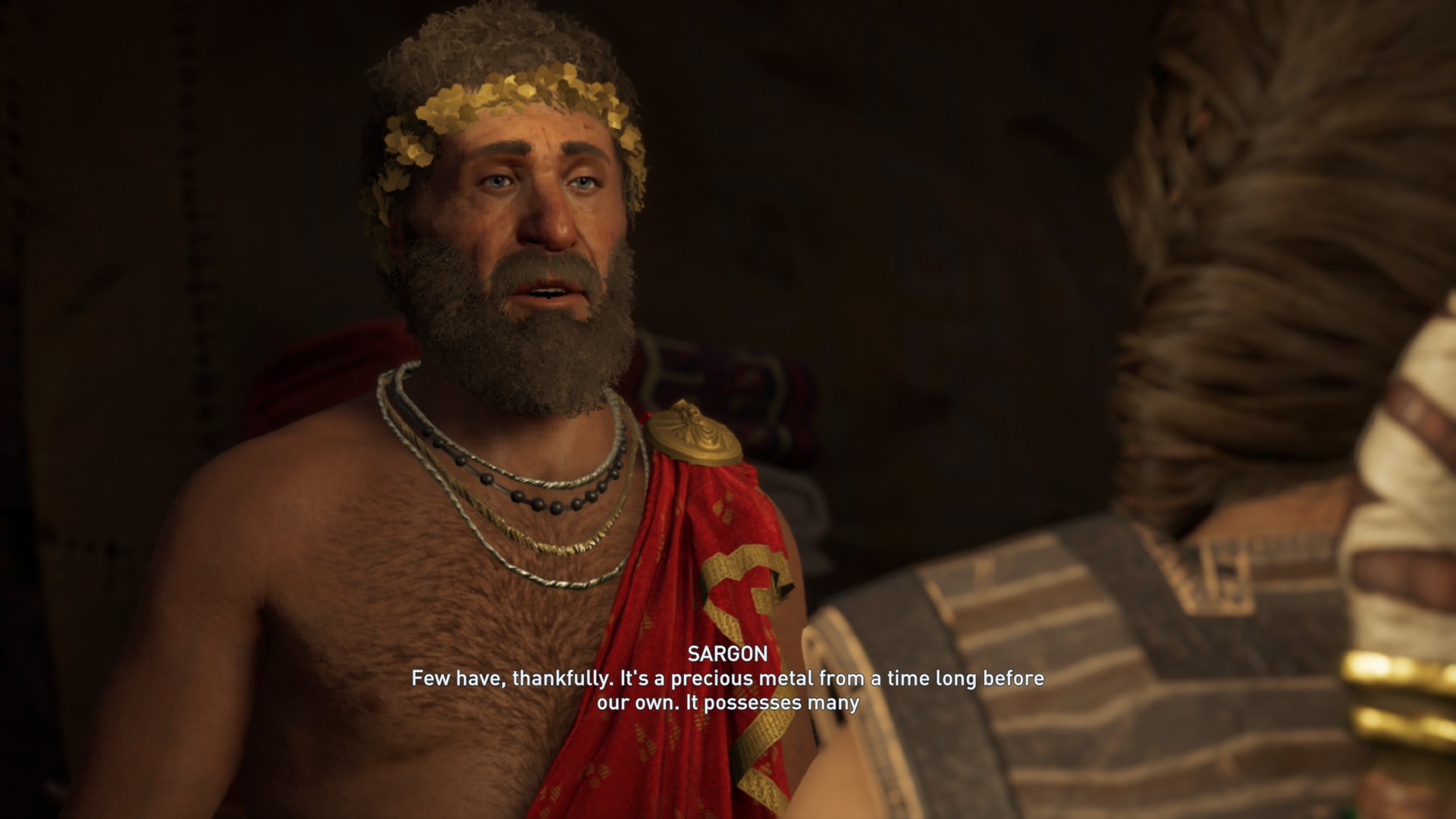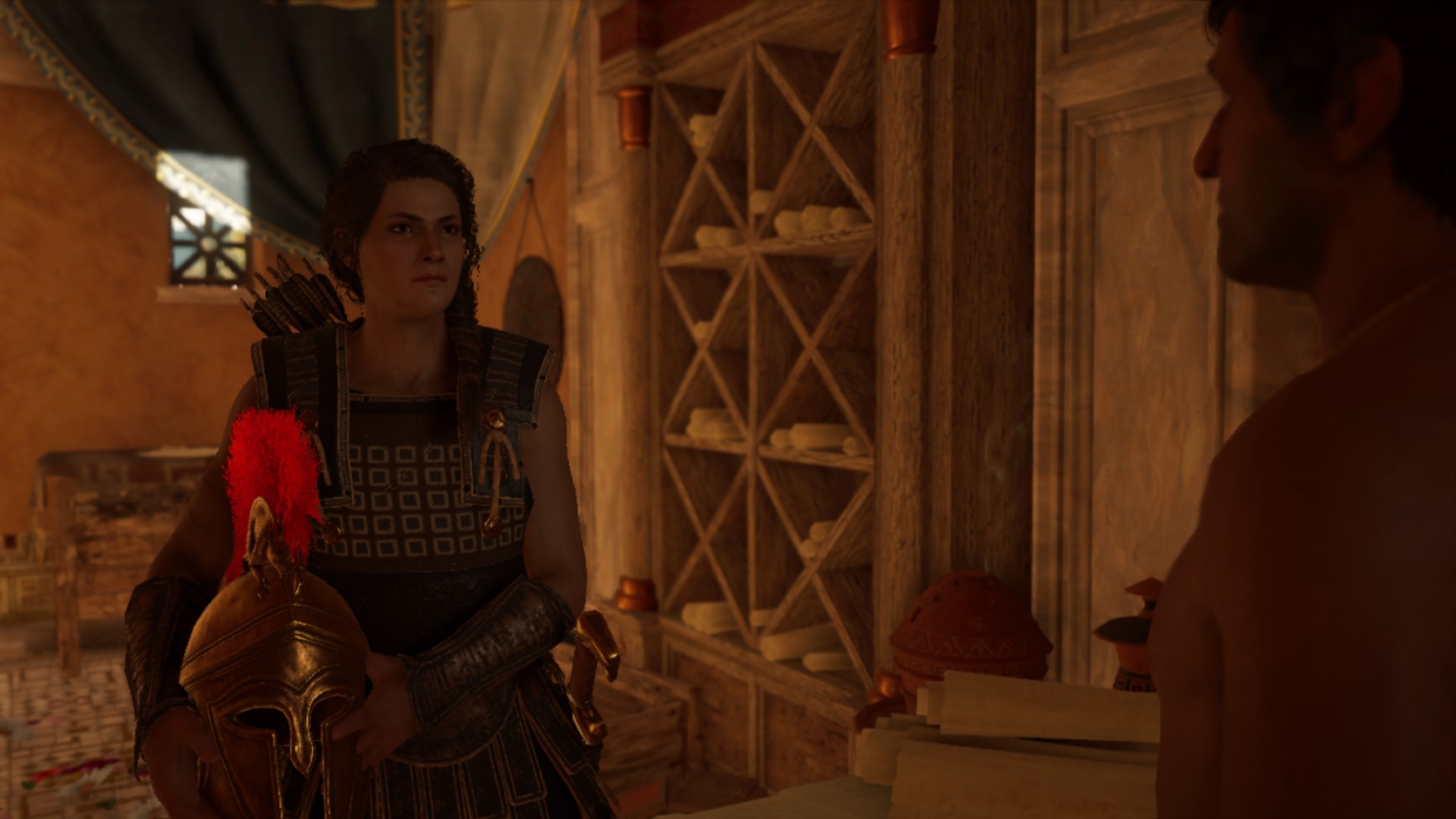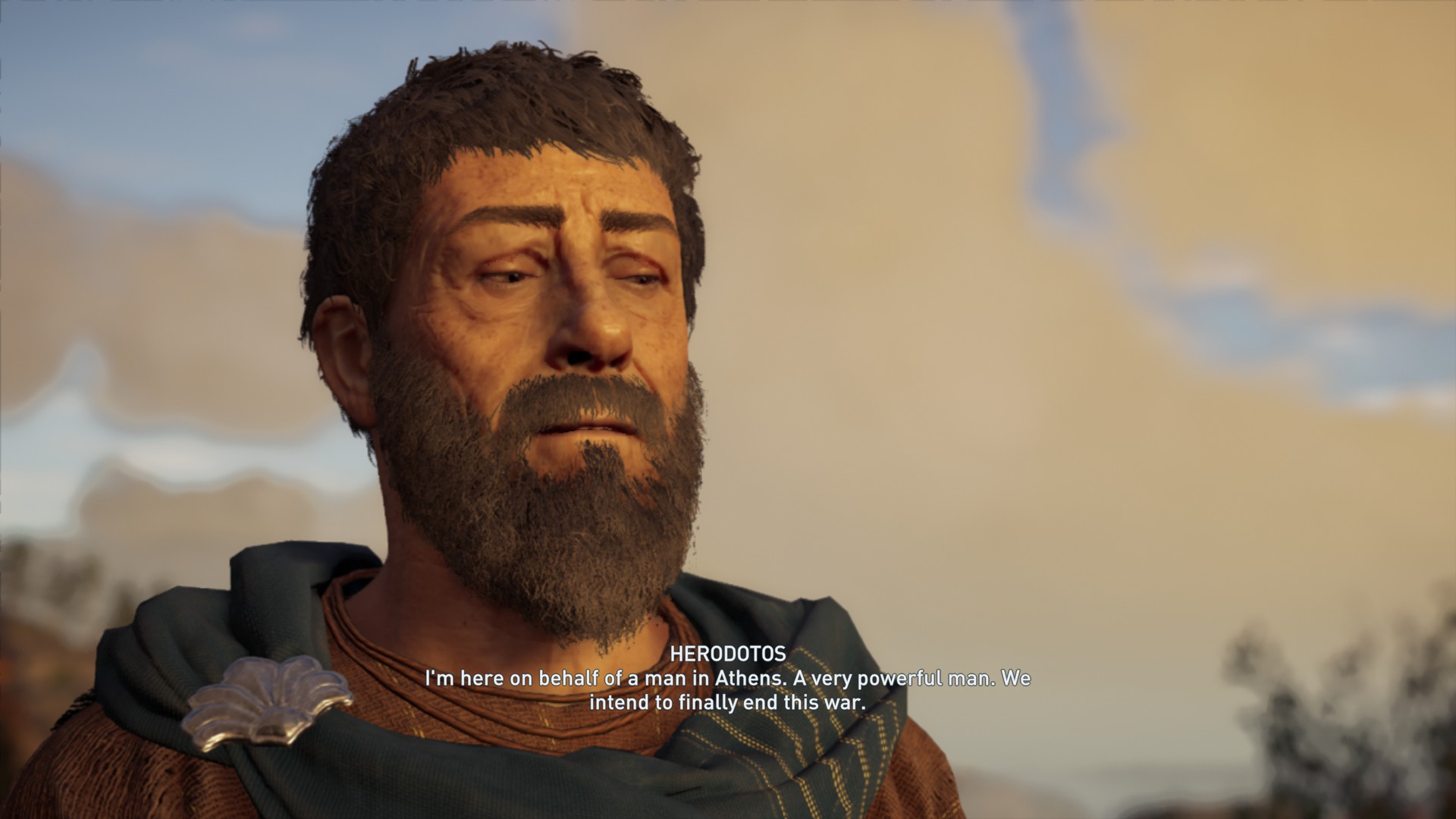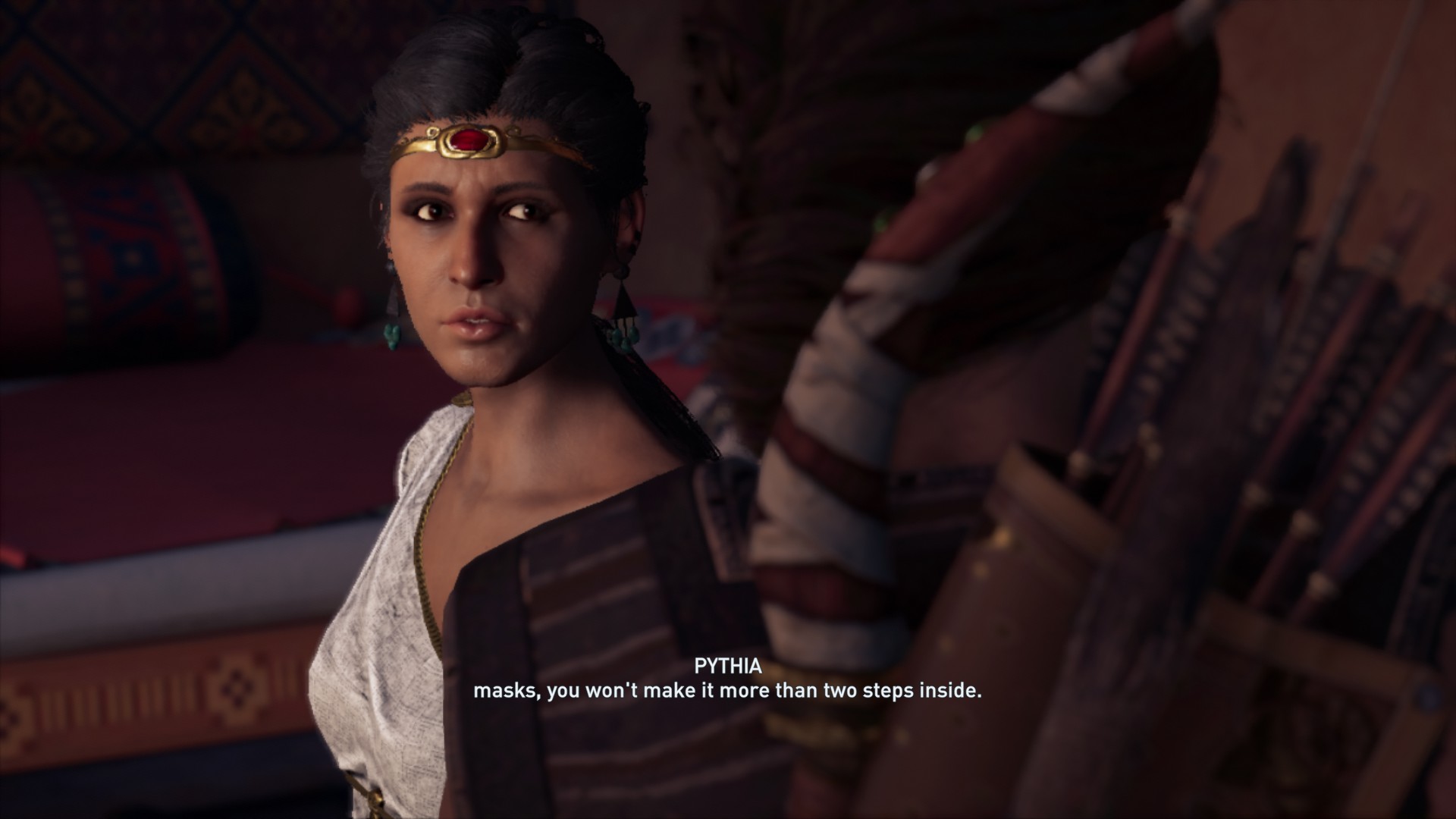Ac Odyssey Oracle Of Delphi
Where has the time gone? When we last left off, all the way back in Dec, I had succeeded in ousting the Athenians from Megara. I then returned to my ship, the wonderfully named Adrestia, and ready class for Phocis in social club to report back to my employer, a shady character called Elpenor (whose proper name characters in the game insist on pronouncing as el-PEE-nor, based on the modernistic Greek pronunciation of the eta rather than the ancient one).
In any result, I sheet across the Corinthian Gulf to Phocis, a trip that seems to have but minutes and is interrupted by the odd warship that tries to appoint with me, but which I hurry by. After all, I have places to become and people to murder. (Every bit an bated, Peter Gainsford, the "Kiwi Hellenist", examined the shanties in Odyssey, noting that "the musical team have washed a really good task". Cheque it out!)
Running around Phocis
The Adrestia docks at Kirrha (modern Xeropigado), which is a port town. In that location are actually three different names – Kirrha, Krisa, and Kirsa – that may or may not all refer to the same identify; even ancient writers weren't sure near this. Bear witnessSee Hansen and Nielsen's Inventory of Primitive and Classical Greek Poleis (2004), pp. 419-420, for further details. Simply by at to the lowest degree the fourth century BC, so a petty afterwards the fourth dimension that the game is fix, Kirrha had become established as the port of Delphi.
The boondocks itself resembles the other places we've seen in Odyssey already, except that the buildings seem a fleck more spaced out. As you run through Kirrha to reach Elpenor's house, Kassandra at some point volition piping up and comment most her female parent telling her well-nigh the sacred wars. At that place were three Sacred Wars in full, the first fought – supposedly! – in ca. 590 BC, the second in 449-448 BC, and the final one quite some time afterward the game is prepare, in 356-346 BC.

The Sacred Wars were fought over control of Delphi. Delphi was one of four Panhellenic sanctuaries, meaning sanctuaries that belonged to all the Greeks. Like Olympia, it attracted visitors from all over the Greek world and fifty-fifty beyond, who came to accept office in festivals, consult the gods, dedicate offerings to the deities, and more. As at Olympia, games were organized at Delphi every four years, referred to as the Pythian Games. Delphi was considered by the Greeks every bit the eye or navel of the world, and an ancient omphalos, a physical stone "navel", is on display at the site's archaeological museum.
Supposedly, the First Sacred State of war was fought betwixt the Amphitctyonic League of Delphi and the metropolis of Crisa – mayhap, as noted higher up, the same every bit Kirrha – in the early 6th century BC. The Amphictyonic League consisted of a number of cities and peoples who vowed to safeguard the sanctuary, including Athens, Sicyon, and the Thessalians. The war came nigh as a result of the "impiety" of Crisa.
In that location's a wealth of information available about the Commencement Sacred War, but as Noel Robertson pointed out in his commodity "The Myth of the First Sacred War", published way back in 1978 in The Classical Quarterly (28.1, pp. 38-73), in that location's much nigh this early war that strikes the mod reader as dubious. The beingness of a large and seemingly well-organized League in the early sixth century BC is a major trouble, considering the nature of Greek poleis in ca. 600 BC.
In his article, Robertson dives deep into the historiography behind the First Sacred War and finds that "Down to the third quarter of the 4th century Greek literature is completely silent nigh the State of war. Although Delphi was at the middle of Greek history from the colonizing flow [ca. 800-500 BC] onward, the Sacred War is never alluded to by whatsoever writer before c. 345, even in contexts where mention would seem unavoidable" (p. 39). Robertson shows, conclusively I call up, that the First Sacred War never happened, and that the aboriginal city of Crisa never existed. And by extension, Crisa was thus not actually an alternate name for the fairly small-scale town of Kirrha.
Assassinator'due south Creed: Odyssey is ready in 431 BC, so the "Sacred Wars" that Kassandra's mother referenced must have been the one from 449-448 BC. This Sacred War was a direct disharmonize between Athens and Sparta over who should control the sanctuary, with Athens favouring the Phocians and Sparta wanting the sanctuary to be substantially independent. Within the context of the game, it sort of serves as a prelude to the larger disharmonize between Athens and Sparta, even if the effects of the outcome of this tussle probably left most visitors at Delphi unperturbed.

In any event, I make my way through the streets of Kirrha and eventually reach Elpenor's relatively humble habitation. In the cutscene, Kassandra walks upward to Elpenor's desk and slams the helmet on the table that she retrieved from the Wolf of Sparta. It's at this signal that he reveals that he knows Nikolaos is really Kassandra'due south stepfather. The plot thickens.
If information technology wasn't clear past now, Elpenor clearly can't be trusted. For whatever reason, he decides that Kassandra has outlived her usefulness. He makes his escape while you accept control of Kassandra and have to murder Elpenor's guards. With that out of the manner, you're complimentary to explore Elpenor's business firm and collect some clues as to where to go next. And all roads lead, inexorably, to the Oracle of Delphi.

The sanctuary at Delphi is located on a slope of Mount Parnassus and offers a dramatic view of the surrounding countryside. When you're there, it'due south non difficult to fathom why the ancient Greeks would have sited a major sanctuary in this identify. According to some, the "omphalus" of the earth had once been guarded by a behemothic serpent called Python. Apollo had killed the beast, but may have named the identify afterward the monster, Pytho. A special priestess was selected as the vessel through which Apollo would communicate with pilgrims: she was referred to every bit the Pythia or Oracle. Some claim that this woman entered a trance by inhaling vapours emitted from a cleft in the rocks, but no geological evidence supports this. ShowCatherine Morgan, Athletes and Oracles: The Transformation of Olympia and Delphi in the Eighth Century BC (1990), p. 151.
In the game, it takes virtually no time to climb up from Kirrha to Delphi itself. But I have to say, the developers outdid themselves when it came to modelling the actual site in the game. They included the walls that mark the site's temenos or "sacred prencinct", the "Sacred Way" that zigzags up to the Temple of Apollo, and a plethora of smaller buildings, including the Bouleuterion and various treasuries. The treasuries were essentially shop houses where cities kept their offerings; one of the nicest is the Treasury of the Siphnians, well-nigh which Gareth Williams wrote an article. If I take one major complaint, it's that the stone theatre featured in the game actually wasn't built until the fourth century BC at the earliest.

The center of the sanctuary is, of course, the Temple of Apollo. The earliest temple that stood on this located dated to the mid-7th century BC, only it burned down in 548 BC. A new structure was put in its place in 506 BC. This is the temple that ought to exist represented in the game. Information technology stood here until an earthquake brought it downward in 373 BC, afterward which it was replaced past some other temple that featured an adyton or inner sanctum within the temple's master room or cella (also referred to in proper Greek as the naos).
In front of the temple of Apollo, we run into Barnabas and a human who turns out to exist none other than the historian Herodotus. Herodotus' dress is a little foreign and he seems to clothing what are knee-length shorts: the Art of Assassin'south Creed: Odyssey volume points out that the designers gave him some oriental traits on account of his home town being Halicarnassus. Halicarnassus was located in Asia Small and thus within the borders of the Persian Empire. It's a nice touch, I recall, even if I somehow doubt he would have dressed in this manner afterward moving to Athens.

Herodotus is generally thought to have been born around 484 BC, and so that would make him around 53 years sometime at the time of the game. His character model seems to fit that age, so kudos to the design time for getting this right. Herodotus is known for writing the Historiai ("Inquiries"), a book in which he sets out the history of the Greek and Persian Wars of the first decades of the fifth century BC. The book is non a dry out summation of events, but rich in ethnographic particular. We rely on his volume for much of our knowledge about ancient Greece in the period between ca. 550 and 479 BC.
After a brief conversation with Herodotus, you venture inside the temple and run into the Oracle. (As an aside, Gareth Williams wrote almost a possible Sibylline stone at Delphi.) Y'all don't really get the chance to inquire any probing questions before you're shuffled out of the door and back exterior. After another chat with Herodotus there really is but one thing left to do: confront the Oracle at her dwelling and effort to get some real answers.

All we know is that the Oracle lives in a firm in chora, the surrounding countryside around Delphi, and that it's the biggest and nicest business firm around. This seems a reasonable supposition: priests and priestesses were normally picked from affluent and influential families. It seems probable that this was still the case during the fourth dimension that the game is set, even though in later periods the people of Delphi supposedly preferred to pick uneducated women from the among the lower classes, believing them to be more innocent.
In the game, the Pythia is an attractive young adult female. According to Diodorus Siculus, the Oracle used to exist a young virgin, but after the Pythia was raped past a pilgrim who had been overcome by lust, only centre-aged women were allowed to serve as Apollo's oracle (16.26.six). Diodorus lived in the outset century BC and it seems unlikely that this dominion was already in effect during the time that the game is set. Still, it's difficult to believe that the Pythia would evidently live in a house by herself, even one that is also-guarded every bit in the game. Where is the rest of her family? (As an aside, one of the guards hither was chosen "Homer the Insane", which elicited a chuckle.)

Subsequently dispatching all of the guards, we're gratuitous to enter the house. Talking to the Pythia and then again with Herodotus gives you all the answers yous need, including the revelation – if that wasn't obvious before – that Elpenor is a member of the "Cult of Kosmos", a nefarious organization that operates in the shadows. Our next chore is clear: assassinate Elpenor and get a disguise from him, so that we can nourish a coming together of the Cult and acquire more nigh them in the process.
Supposedly, Elpenor is hidden abroad inside Pharsalos Fort. The proper name is a bit disruptive: at that place is a metropolis called Pharsalus (modern Farsala) located in southern Thessaly, or quite a bit north from Delphi. I assume that the fort is named the style it is because it's located on some inland route to the urban center? Be that as information technology may, nosotros accept to get to the fort and sniff out Elpenor. There's little to add here to what I've written before about the forts in the game, then I'll cut a long story short: it turns out that Elpenor isn't at Pharsalos Fort at all. The guy we kill there is nothing but a decoy.

Elpenor instead is hiding at the Snake Ruins in the aptly named Valley of the Ophidian. It takes a while to become there, but the sight is definitely one to behold: there are the ruins of a temple and the skeleton of a behemothic serpent, no dubiety a reference to Python, the monstrous serpent slain by Apollo. In any outcome, it doesn't take long to acceleration all of the guards and Cult members who are patrolling here. Sending Ikaros, the hawkeye, up into the air allows me to locate Elpenor: he's in the cavern atop the modest cliff overlooking the ruins.
While Elpenor doesn't look formidable, he puts upwardly a skilful fight. Eventually, of form, he bites the grit and this gives us access to his cultist costume, which nosotros demand to nourish the secret meeting. I rush back to Delphi, where I observe Herodotus outside of the Bouleuterion. He advises me to leave all my weapons backside, so it's clear that whatever happens side by side, information technology probable won't involve much in the way of fighting. But that, of course, is something best left for the next instalment of this series.
Ac Odyssey Oracle Of Delphi,
Source: https://www.ancientworldmagazine.com/articles/assassins-creed-odyssey-consulting-oracle-delphi/
Posted by: hollidayhicad1949.blogspot.com


0 Response to "Ac Odyssey Oracle Of Delphi"
Post a Comment